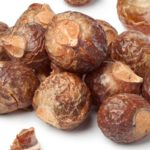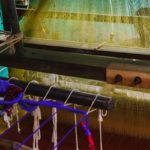The colours of Kanchipuram weaves have musical names, all of them in native Tamil. Some of them come from the names of the fruits, flowers, vegetables and leaves– from nature. Others come from the pastes and powders that women used to adorn themselves: sandalwood, smoke from the incense (dhumra varnam means purplish smoke, for instance), and kumkum powder. And all of these are also offerings to the Gods: the flowers for the garlands, the pastes and powders to adorn the deities, the fruits and vegetables as part of the prasad or prasadam. Viewed that way, the saree is a sacred piece of cloth, linked intrinsically to the land that it blooms from, and braided to the customs, culture and religion of the people.
Hear them Spoken
Here are a few, all of which come from the flora and fauna of the region.
- Jamun: Purple
- Kathiri poo colour: Brinjal flower– a type of lavendar
- Vengaya-thol colour: Onion skin pink
- Eeyachombu colour: Tin: metallic gray
- Mayil kazhuthu colour: Peacock neck blue
- Ramar blue: the blue of Rama
- Ilai pacchhai: Leaf green
- Mithai pink: Candy pink
- Kili pacchhai: Parrot green
- Kaar-megham colour: Midnight blue: the colour of rain clouds
- Kumkumapoo colour: Saffron maroon
- Arakku: Maroon
- Milakai pazha colour: Red chili fruit colour
- Yaanai colour: greyish blue
- Thamarai poo colour: Lotus off white
- Thamarai poo pink: Lotus pink
- Chandana colour: Sandalwood (beige/biscuit) colour
- Maampazha colour: Mango yellow
- Kanakambaram orange: Crossandra infundibuliformis flower orange
- Kaapi kottai colour: Coffee bean brown





